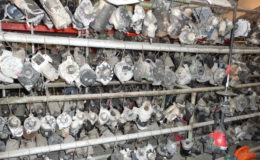As a mechanic or garage owner, you will always have the odd customer that approaches you or your business, asking whether you would be able to fit parts that they have provided themselves, rather than ones that you can obtain yourself. It’s always been a notable topic among traders and garage owners that hasn’t really had much publicity, but as you can imagine it provides many opportunities for things to go wrong, as from a business perspective, you will never know where said parts have come from, how they’ve been used, kept, or put together.
In a recent meeting held by the Independent Automotive Aftermarket Federation (IAAF), such a process as using customer-supplied parts, is a judgement of commercial risk against the Supply of Goods and Services Act 1982, and Consumer Protection from Unfair Trading Regulations 2008. For many car owners, obtaining second hand parts, unaware of any history or maintenance is no big deal, yet for garage owners and mechanics, who make a living and run a business off the fitting of such parts, it could be a large headache that they could do without.
The problem comes about when the question of liability is raised. Whether it be ignorance of the seller, the customer supplying it to the garage, or the actual garage owner themselves, providing they then go on to fit it. If the part does fail anywhere down the line, causing annoyance for the customer, they could then argue that the garage had no problem with fitting it so they should of advised differently, due to their extensive knowledge of such occurrences.
The long and short of it is, as a garage owner, it’s always going to be best veering away from providing such services as fitting customer-supplied parts – always try and obtain genuine, new parts yourself and get the job done properly. After all, that’s what you’re there to do. At the end of the day, everyone is going to complain about the cost of vehicles in general, and the costs implied when repairing them, but as with many things, you pay for what you get – if customers want repairs done properly, they’ll have to pay for them. Use of “dodgy” parts will cost them more money in the long run when they break/malfunction.




